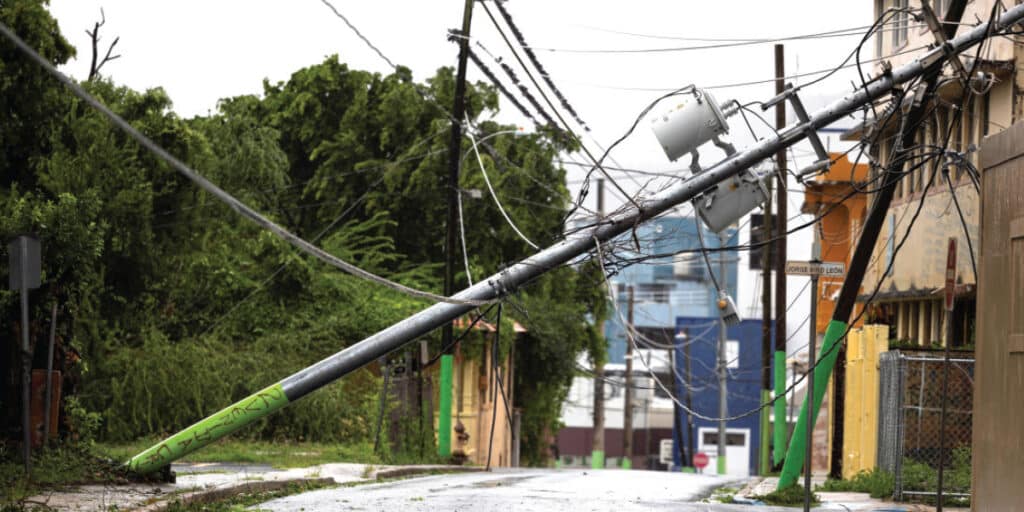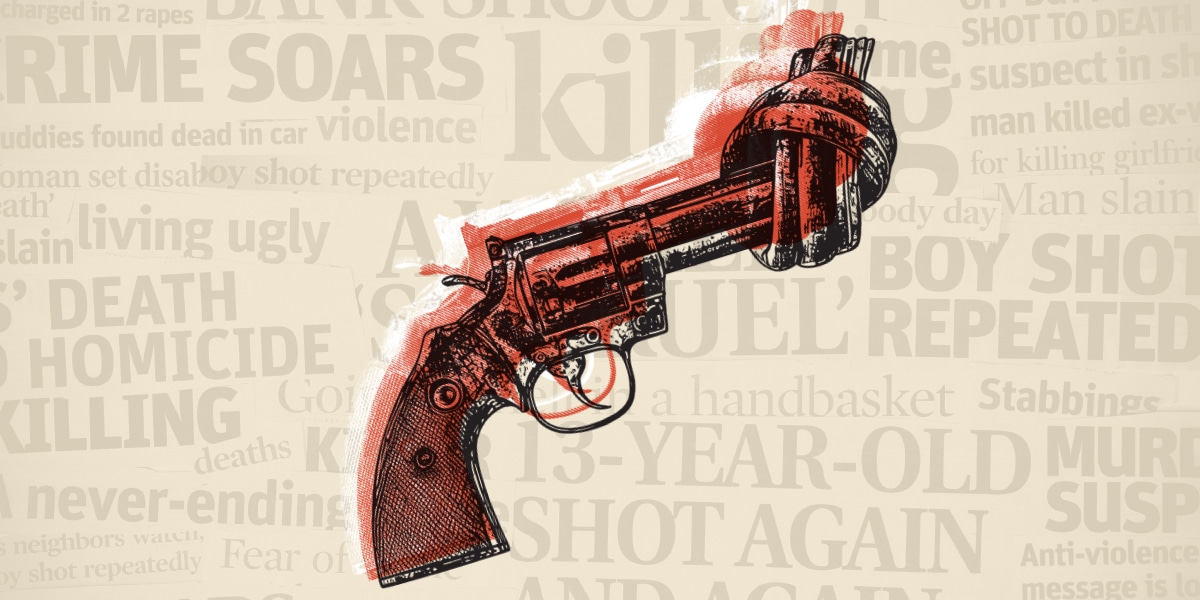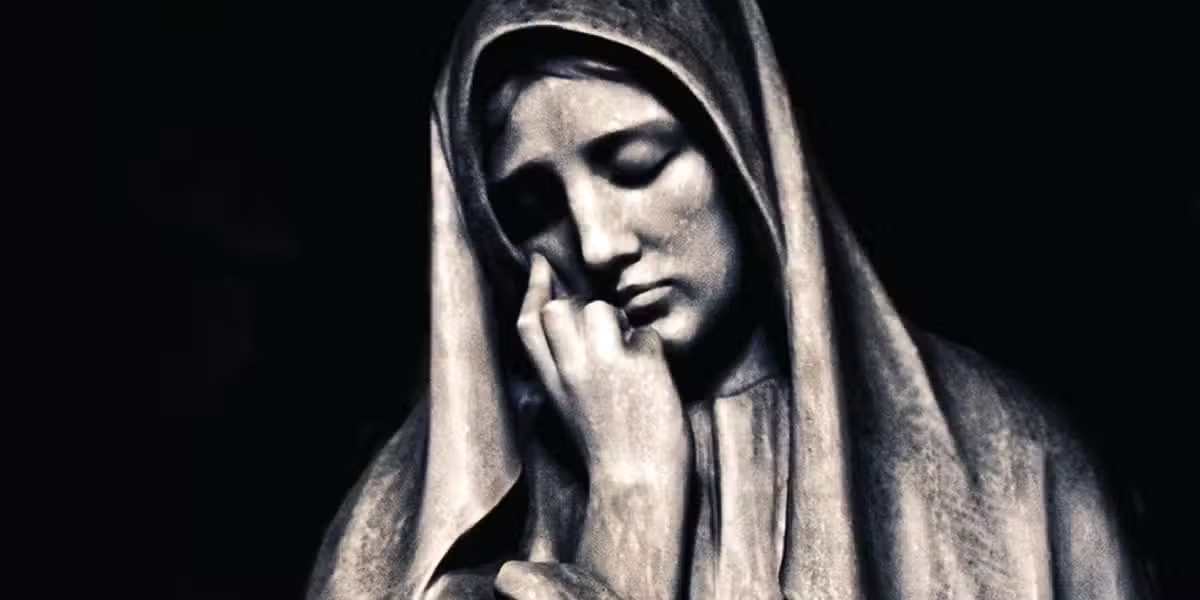Catholic Extension Society seeks to erect more than 600 churches and schools in storm-torn Puerto Rico. It is believed to be the largest rebuilding and recovery project in the history of American Christianity.
“I saw this series is called ‘Rebuild My Church,’” says Catholic Extension Society chief mission officer Joe Boland as he settles in for his interview with St. Anthony Messenger. The series title hearkens St. Francis of Assisi’s call from God: “Rebuild my church, for as you can see it is fallen into ruin.” As goes the famous story, Francis immediately began rebuilding the small wayside San Damiano chapel, not realizing his divine call meant more than stacking stones. Boland laughs, “Well, like Francis, we have always taken that call very literally.”
Since its founding in 1905, Catholic Extension has helped rebuild or repair more than 13,000 churches. “That’s almost as many [as] Starbucks stores in the United States,” Boland laughs, “but only if you don’t count the Starbucks shops in airports and Target stores.”
Today, the Catholic Extension Society (CES) continues to “stack stones” as Boland spearheads an ambitious project to repair and rebuild more than 600 churches and schools in Puerto Rico. It is believed to be the largest rebuilding and recovery project in the history of American Christianity.
Railways into the Margins
Throughout its history, the mission of Catholic Extension (CatholicExtension.org) has unfolded on the “peripheries,” a central theme in Pope Francis’ pontificate that emphasizes the importance of the Church serving on the margins—where people are overlooked, excluded, or underserved by society. In other words, where the poor and forgotten are, the Church should be.
The society was founded by Father Francis Clement Kelley at the turn of the century; he sought to bring the sacraments to remote communities across the United States. Priests began traveling by railway to rural frontier towns, where Mass would be celebrated with locals from the back of railcars. In 1910, Pope Pius X made Catholic Extension a papal society, meaning that it was under the direct authority of the Holy See.
As the society grew and evolved, it continued to travel on these proverbial railways into the margins. It would build and repair thousands of churches in disadvantaged areas, develop leaders and fund ministries that serve under-resourced communities, and equip social outreach ministries that enrich the lives of those who need it most. Catholic Extension, for 120 years, has essentially served as a conduit for the Church’s evangelization efforts to the marginalized in the Americas.
“Our founder understood that there were new territories that were coming under the American flag and really worried that if the Church wasn’t taking care of its own, it would be very easy for them to lose their language, their culture, and ultimately their Catholic faith as well,” Boland reflects. “And so, there was always a very intentional solidarity with places like Puerto Rico, the US-Mexico border, the Bering Sea Coast in Alaska, other island protectorates like Guam, Samoa, and even the Philippines back in the day. So that was the purpose of CES: awaken the mission spirit in America and really understand where the missionary frontiers were in our own country.”
Boland, who has worked at Catholic Extension Society for 16 years, has no shortage of stories from the peripheries. He remembers Catholic Extension providing much-needed support to the Navajo Nation in 2020 as COVID-19 ravaged their reservation, or paving the way for Latin American sisters to earn a pastoral education in the United States—50 sisters have since gone through the program and returned to Latin America to serve approximately 300,000 people—or equipping a network of churches in a poor, rural Montana town with a large homeless population to routinely bring the community together by grilling world-famous cheeseburgers and offering free meals before rodeos. In a polarized age, where places like Appalachia or the US-Mexico border are reduced to political flashpoints, Catholic Extension digs deeper.
“We invite people to see through the Church’s lens—human dignity, not narratives,” Boland says. On the margins, divisions melt away. Common humanity becomes clear. A Lakota elder once told Boland that their word for God is “grandfather”—higher than father. “That’s the beauty we encounter,” he says. “Faith speaking through culture, teaching us. We have a front-row seat to the Church at her best.”
Island of Hope and Devastation
Perched atop a Puerto Rican mountain is a small mission chapel. This chapel was a vessel for healing amid the destruction of Hurricane Maria in 2017, one of the most catastrophic natural disasters in the island’s history; over 95 percent of the island’s 1.5 million homes suffered damage. Maria obliterated Puerto Rico’s electrical system, knocking out the entire grid for months and, in some rural places, the entire year. But with power lines down and roads blocked by mudslides, the chapel was used for cooking meals for nearby residents and packaging and delivering water to the elderly. Not unlike the Portiuncula, the tiny church at the base of Assisi that became the crux of the Franciscan mission as they served the lepers and the poor during the Middle Ages, this unassuming chapel and others became symbols of hope and Catholic Extension’s longstanding commitment to the island.
“When FEMA couldn’t get to them and emergency workers couldn’t get to them, the Church was able to go check on people and care for people,” Boland shares.
Catholic Extension says it was the first organization to wire money to Puerto Rico in the wake of Maria, equipping the Church to respond to humanitarian needs as Puerto Ricans floundered in the dark. Three months later, an unexpected US Supreme Court decision permitted houses of worship to receive rebuilding money from the federal government. Catholic Extension acted quickly, organizing an island-wide initiative that ultimately resulted in proposing the rebuilding of more than 610 Catholic churches, chapels, and schools.

“We invested the upfront costs in order for them to make their case to FEMA that they’d be eligible for this funding,” Boland shares. “They were found to be eligible for what would end up being a nearly half-billion dollar rebuilding project. And now we are supporting and organizing the largest building and recovery projects in the history of American Christianity.”
But planning and rebuilding on this magnitude has not been seamless.
Two years after Hurricane Maria’s devastation, earthquakes further traumatized an island that was already wary of government support and its ability to address people’s needs. Again, the power grid was knocked out, resulting in an estimated $3.1 billion in financial losses to the island.
“This is why rebuilding is so crucial,” Boland shares. “We need more resilient structures for when the next natural disaster comes, so that these places might be able to shelter and save more lives.”
When it came to Catholic Extension’s ambitious rebuilding and recovery program, the organization faced plenty of pushback. Naysayers said that the Church in Puerto Rico could never pull off a program of this scale. They said FEMA would never approve the grants for damaged churches. They said the Puerto Rican government would never cooperate with CES on this level and that the Department of Housing and Urban Development would never support such a project. They said Catholic Extension could never find the professionals to support the Church’s construction efforts, or that the dioceses of Puerto Rico could never work together toward a common goal. Shares Boland: “Yet, we’ve proven that none of these pessimistic predictions of failure came to pass, thanks to hard work, constant communication, and commitment to succeed among the various stakeholders inside the Church, government, and within the broader community.
“St. Francis understood that there’s power in and from the margins,” he says. “Going back to the Portiuncula, the way we see our work is that we’re trying to help build up the Church. That’s our mission statement: Build up the Church, in and among the poor in the poorest regions. Our belief is that if you do that, there is powerful renewal from the margins that seasons the rest of the Church and will make its way back to the heart of the Church. . . . One of the best lines I’ve ever heard while working at CES is that we don’t provide these services because these people we’re serving are Catholic. We’re doing it because we’re Catholic, and this is what our faith calls us to do.”
From Rome to San Juan
When the Catholic Extension Society delegation visited Rome in 2018, Pope Francis thanked members for their continued work in Puerto Rico. He then blessed two Puerto Rican flags. One hangs in the office of the archbishop of San Juan, whose archdiocese oversees the historic Cathedral of Old San Juan, which suffered $12 million in damages from Hurricane Maria. The other flag hangs in Boland’s office, proudly situated on-screen during his interview with St. Anthony Messenger.
“The flag is a daily reminder to me of Catholic Extension’s 120 years of solidarity with the island, but also that the work we are doing now to restore Catholic churches and schools has so much potential to transform the future of Puerto Rico,” Boland shares. “The flag also reminds me that when you work closely with people, as we do with Puerto Rico, they change you.”
It has been a long road, but on March 31 a groundbreaking ceremony was slated (this story went to print five days before) at the Cathedral of Old San Juan, a 500-year-old structure that is a major historical site in Puerto Rican society and one of the oldest churches under the American flag. At the ceremony, scaffolding was to go up as a sign of progress and hope to Puerto Ricans as they were joined by Catholic Extension Society’s chancellor, Cardinal Blase Cupich—who has supported this recovery program from the very beginning with the backing and blessing of Pope Francis. The ceremony kicked off a new wave of recovery efforts on the island as Catholic Extension continues its commitment to rebuild 600 churches and schools. Boland shares, “This is just the start.”
He planned to be in attendance as well, shaking hands and saying something he has grown accustomed to sharing with locals over the years: Soy Boricua de corazón.
“I’m Puerto Rican at heart.”








